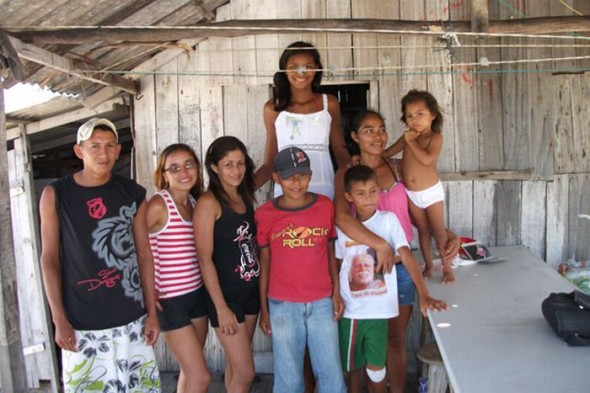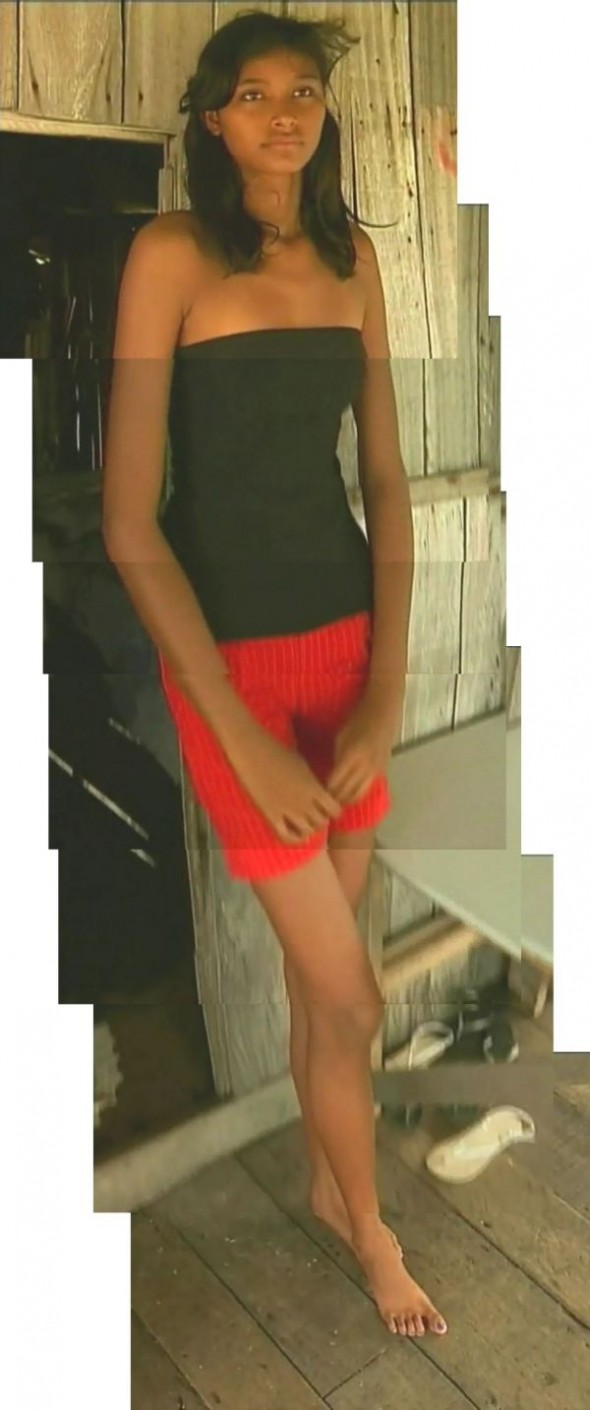≡ ∆ •¦• ẰℓÕų§ħĶä •¦• ∆ ≡
Science news, art news, Funny weird news, photos, pictures, videos about just everything to keep you entertained... you will always learn something new :)
Saturday, January 1, 2011
Happy new year :)
my dear friends... i wish you love, peace...bla bla BORING
i wish you win the freaking Lottery... :D
HAPPY new year!!!
ali
Wednesday, October 6, 2010
New Target to Improve Pain Management Identified
ScienceDaily (Oct. 4, 2010) — Researchers from Mount Sinai School of Medicine have discovered a major mechanism underlying the development of tolerance to chronic morphine treatment. The discovery may help researchers find new therapies to treat chronic pain, and reduce tolerance and side effects associated with morphine use. The findings are published in the July 20th issue of Science Signaling.
Overcoming tolerance to morphine after chronic administration has been a persistent problem in treating patients with severe pain, including those with cancer and neuropathy and recovering from major surgeries. After a week of morphine use, its effectiveness decreases as patients build tolerance, and patients also experience negative side effects like addiction and constipation. Researchers at Mount Sinai have identified changes in the brain and spinal cord that occur during the development of morphine tolerance, providing a therapeutic target for preventing it and allowing for the identification of new therapies to treat pain with fewer side effects.
Led by Lakshmi Devi, PhD, Professor of Pharmacology and Systems Therapeutics at Mount Sinai School of Medicine, the research team studied changes in the abundance and signaling properties of a protein complex containing two different types of opioid receptors in the brains of mice. The protein complex, called a heterodimer, is made up of the mu receptor and one other opioid receptor called the delta receptor. After using a clever strategy to develop selective antibodies for the detection of the heterodimer in vivo, they found that this protein complex excessively accumulates in areas of the brain that process pain. Previous studies from Dr. Devi's lab have shown that signaling through this complex is associated with a reduced responsiveness to morphine over five days of treatment. Therefore, it is likely that the accumulation of this complex in pain-processing brain regions may be the cause of the development of morphine tolerance.
"We found that the brain selectively responds to chronic morphine by increasing heteromer abundance, blocking individual receptors from signaling the analgesic response to morphine," said Dr. Devi. "Now that we have identified a signaling complex associated with morphine tolerance, we can develop a drug that will block the delta receptor within this complex, allowing the mu receptor to signal for pain reduction." Dr. Devi's team will also work to find a drug that binds to the mu-delta receptor complex so that they can study how this receptor complex presents itself in other diseases as well.
"This finding may apply to more than just opiates," continued Dr. Devi. "We look forward to studying the behavior of similar receptor complexes in diseases like obesity, alcohol-induced liver fibrosis, and neuropathic pain itself."
DNA Art Imitates Life: Construction of a Nanoscale Mobius Strip
ScienceDaily (Oct. 4, 2010) — The enigmatic Möbius strip has long been an object of fascination, appearing in numerous works of art, most famously a woodcut by the Dutchman M.C. Escher, in which a tribe of ants traverses the form's single, never-ending surface.
Scientists at the Biodesign Institute at Arizona State University's and Department of Chemistry and Biochemistry, led by Hao Yan and Yan Liu, have now reproduced the shape on a remarkably tiny scale, joining up braid-like segments of DNA to create Möbius structures measuring just 50 nanometers across -- roughly the width of a virus particle.
Eventually, researchers hope to capitalize on the unique material properties of such nano-architectures, applying them to the development of biological and chemical sensing devices, nanolithography, drug delivery mechanisms pared down to the molecular scale and a new breed of nanoelectronics.
The team used a versatile construction method known as DNA origami and in a dramatic extension of the technique, (which they refer to as DNA Kirigami), they cut the resulting Möbius shapes along their length to produce twisted ring structures and interlocking loops known as catenanes.
Their work appears in the October 4 advanced online issue of the journal Nature Nanotechnology. Graduate students involved in this work include Dongran Han and Suchetan Pal in the Yan group.
Making a Möbius strip in the everyday world is easy. Cut a narrow strip of paper, bring the two ends of the strip close to each other so that they match, but give them a half-twist before fastening the ends together with a piece of scotch tape. The resulting Möbius strip, which has only one surface and one boundary edge, is an example of a topological form.
"As nanoarchitects," Yan says, "we strive to create two classes of structure -- geometric and topological." Geometric structures in two and three dimensions abound in the natural world, from complex crystal shapes to starfish, and unicellular organisms like diatoms. Yan cites such natural forms as a boundless source of inspiration for human-designed nanostructures.
Topology, a branch of mathematics, describes the spatial properties of shapes that may be twisted, stretched or otherwise deformed to yield new shapes. Such shape deformations may profoundly alter the geometry of an object, as when a donut shape is pinched and stretched into a figure eight, but the surface topology of such forms is unaffected.
Nature is also rich in topological structures, Yan notes, including the elegant Möbius. The circulations of earth's warmer and cooler ocean currents for example, describe a Möbius shape. Other topological structures are common to biological systems, particularly in the case of DNA, the 3 billion chemical bases of which are packed by the chromosome inside the cell, using topological structures. "In bacteria, plasmid DNA is wound into a supercoil," Yan explains. "Then the enzymes can come in and cut and reconfigure the topology to relieve the torsion in the supercoil so that all the other cellular machinery can have access to the gene for replication, transcription and so forth."
To form the Möbius strip in the current study, the group relied on properties of self-assembly inherent in DNA. A strand of DNA is formed from combinations of 4 nucleotide bases, adenine (A), thymine (T), cytosine (C) and guanine (G), which follow one another on the strand like necklace beads. These nucleotide beads can bind to each other according to a strict rule: A always pairs with T, C with G. Thus, a second, complementary strand of DNA binds with the first to form the DNA double helix.
In 2006, Paul Rothemund at Cal Tech demonstrated that the process of DNA self-assembly could be used to produce pre-designed 2D nanoarchitectures of astonishing variety. Thus, DNA origami emerged as a powerful tool for nanostructure design. The method relies on a long, single stranded segment of DNA, used as a structural scaffold and guided through base pairing to assume a desired shape. Short, chemically synthesized "staple strands," composed of complementary bases are used to hold the structure in place.
After synthesis and mixing of DNA staples and scaffold strands, the structure is able to self-assemble in a single step. The technique has been used to produce remarkable nanostructures of smiley faces, squares, disks, geographic maps, and even words, at a scale of 100 nm or less. But the creation of topological forms capable of reconfiguration, like those produced by nature, has proven more challenging.
Once the tiny Möbius structures had been created, they were examined with atomic force- and transmission electron microscopy. The startling images confirm that the DNA origami process efficiently produced Escher-like Möbius strips measuring less than a thousandth the width of a human hair. Yan notes that the Möbius forms displayed both right and left handed twists. Imaging permitted the handedness or chirality of each flattened nanostructure to be determined, based on the height differences observed at the overlapping areas.
Next, the team demonstrated the topological flexibility of the Möbius forms produced, using a folding and cutting -- or DNA Kirigami -- technique. The Möbius can be modified by cutting along the length of the strip at different locations. Cutting a Möbius along its centerline yields a new structure -- a looped form containing a twist of 720 degrees or 4 half-twists. The design, which the group calls a Kirigami-Ring is no longer a Möbius as it has two edges and two surfaces. The Möbius may also be cut along its length one-third of the way into its width, producing a Kirigami-Catenane -- a Möbius strip interlinked with a supercoiled ring.
To accurately cut the Möbius nanostructures, a technique known as strand displacement was used, in which the DNA staples holding the central helix in place are outfitted with so-called toe-hold strands which protrude from the central helix. A complementary strand binds to the toehold segment, removing the staples and allowing the Möbius to fall open into either the Kirigami-Ring or Kirigami-Catenane.
Again, the successful synthesis of these forms was confirmed through microscopy, with the Kirigami-Ring structures gradually relaxing into figure eights.
Yan stresses that the success of the new study relied heavily on lead author Dongran Han's remarkable sense of three-dimensional space, allowing him to design geometrical and topological structures in his head. "Han and also Pal are particularly brilliant students," Yan says, pointing out that the complex conceptualization of the nanoarchitectures in their research is primarily performed without computer aid. The group hopes in the future to create software capable of simplifying the process.
"We want to push the Origami-Kirigami technology to create more sophisticated structures to demonstrate that we can make any arbitrary shape or topology using self-assembly," Han says.
Having made inroads into sculpture, painting and even literature, (particularly, the novels of French author Alain Robbe-Grillet), topological structures are now poised to influence scientific developments at the tiniest scale.
Monday, October 4, 2010
Real Partners Are No Match for Ideal Mate, Study Finds
ScienceDaily (Oct. 2, 2010) — Our ideal image of the perfect partner differs greatly from our real-life partner, according to new research from the University of Sheffield and the University of Montpellier in France. The research found that our actual partners are of a different height, weight and body mass index than those we would ideally choose.
The study, which was published the week of 27 September 2010) in the Journal PLoS ONE, found that most men and women express different mating preferences for body morphology than the actual morphology of their partners and the discrepancies between real mates and fantasies were often larger for women than for men.
The study also found that most men would rather have female partners much slimmer than they really have. Most women are not satisfied, either, but contrary to men, while some would like slimmer mates, others prefer bigger ones.
Human mating preferences are increasingly being studied to understand what shapes our complex reproductive behaviour. Whilst previous studies have separately investigated ideal mate choice and actual pairing, this new research was specifically conducted to compare them. The researchers gathered data from one hundred heterosexual couples living in Montpellier, south of France. To measure preferences for body morphology, they used software which allowed the participant to easily modify the body shape of their ideal silhouette on a computer screen. The researchers then compared ideal silhouettes obtained with the actual characteristics of the partners.
For the three morphological traits studied -- height, weight and body mass -- men's mating preferences were less different from their actual partner's characteristics than females' ones. As the authors remark, the lower dissatisfaction observed for men in this study may be restricted to some physical traits, and results could be different for other traits such as personality, political opinion or sense of humor that are also important in partner choice.
Dr Alexandre Courtiol, from the University of Sheffield, who carried out the work with colleagues from the Institut des Sciences de l'Evolution de Montpellier, said: "Whether males or females win the battle of mate choice, it is likely for any trait, what we prefer and what we get, differs quite significantly. This is because our ideals are usually rare or unavailable and also because both sexes express preferences while biological optimum can differ between them."
Sunday, October 3, 2010
The Tallest Teen Girl in the World
A 14 year old Brazilian teen is looked up to by just about everyone around her. Standing at an amazing 6ft 9 in, she is the tallest girl there.







Elisany Silva (Elizane Cruz Silva, Silva da Cruz Elizane) is a Brazilian girl who was born September 27, 1995 and has a height of 206 cm (6′9”) tall. She now ranks among the world’s highest youth.
Being so tall isn’t easy, but it helped her to find a job. She will debut on the catwalk ending the designer’s show in Belem, dressed as a bride.







Subscribe to:
Posts (Atom)



